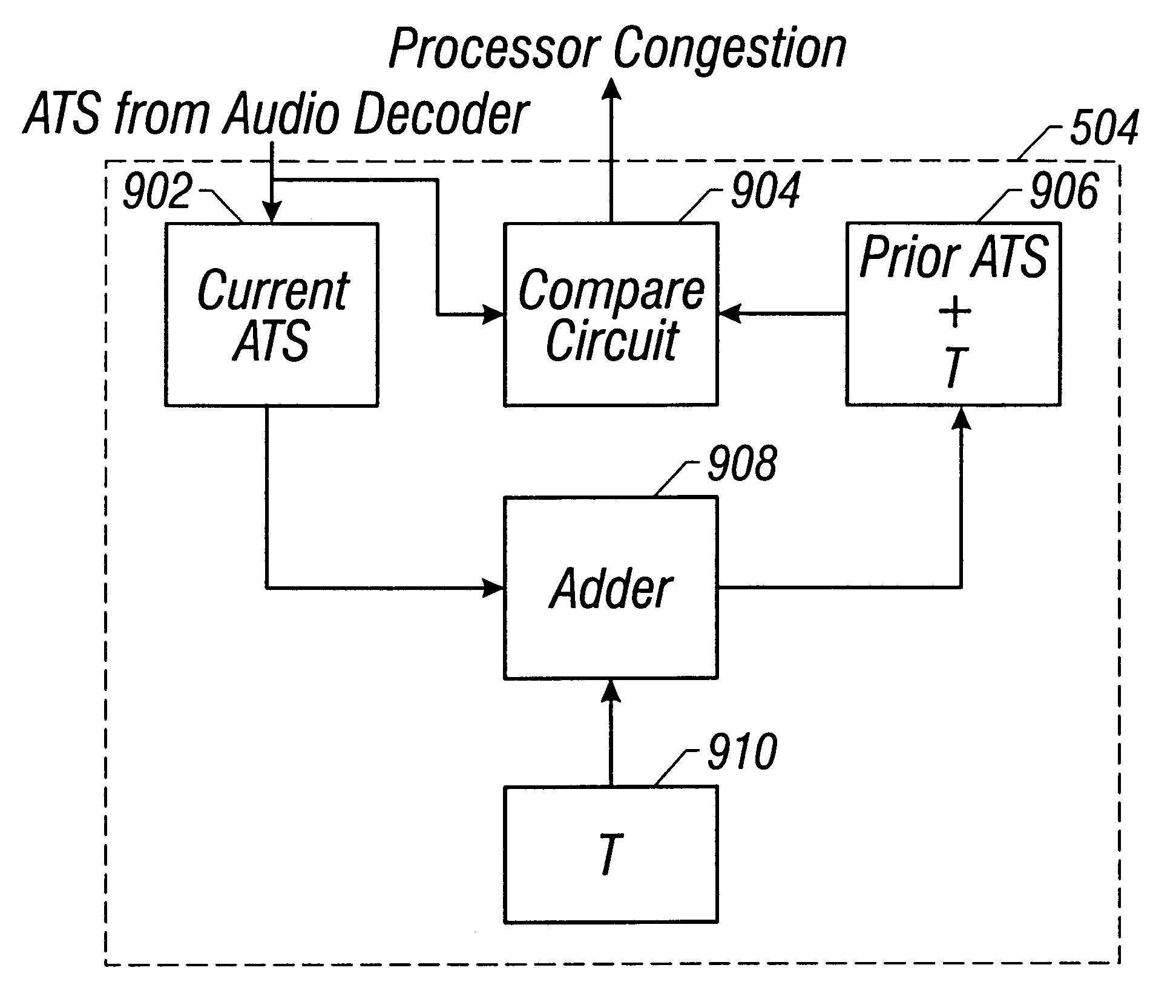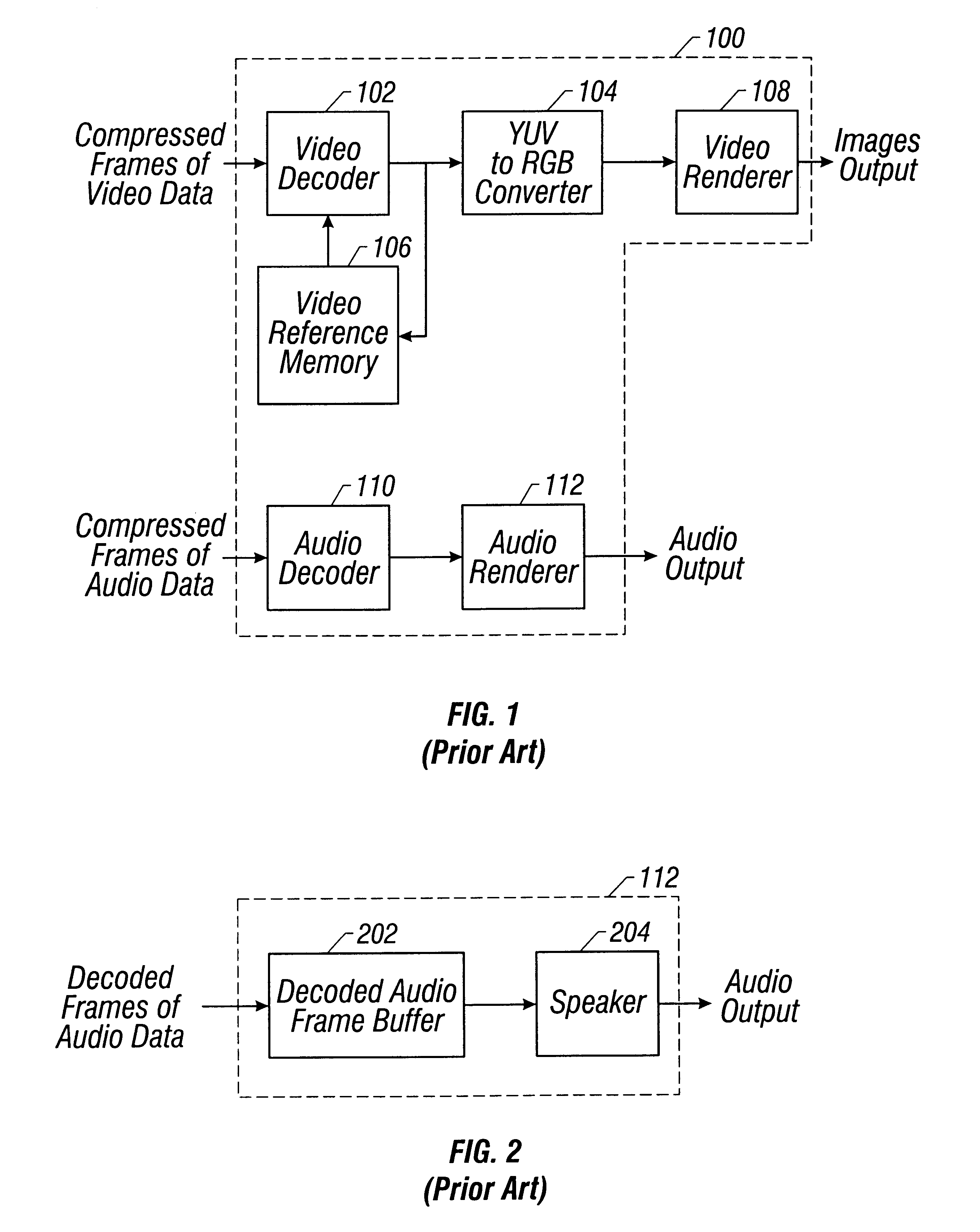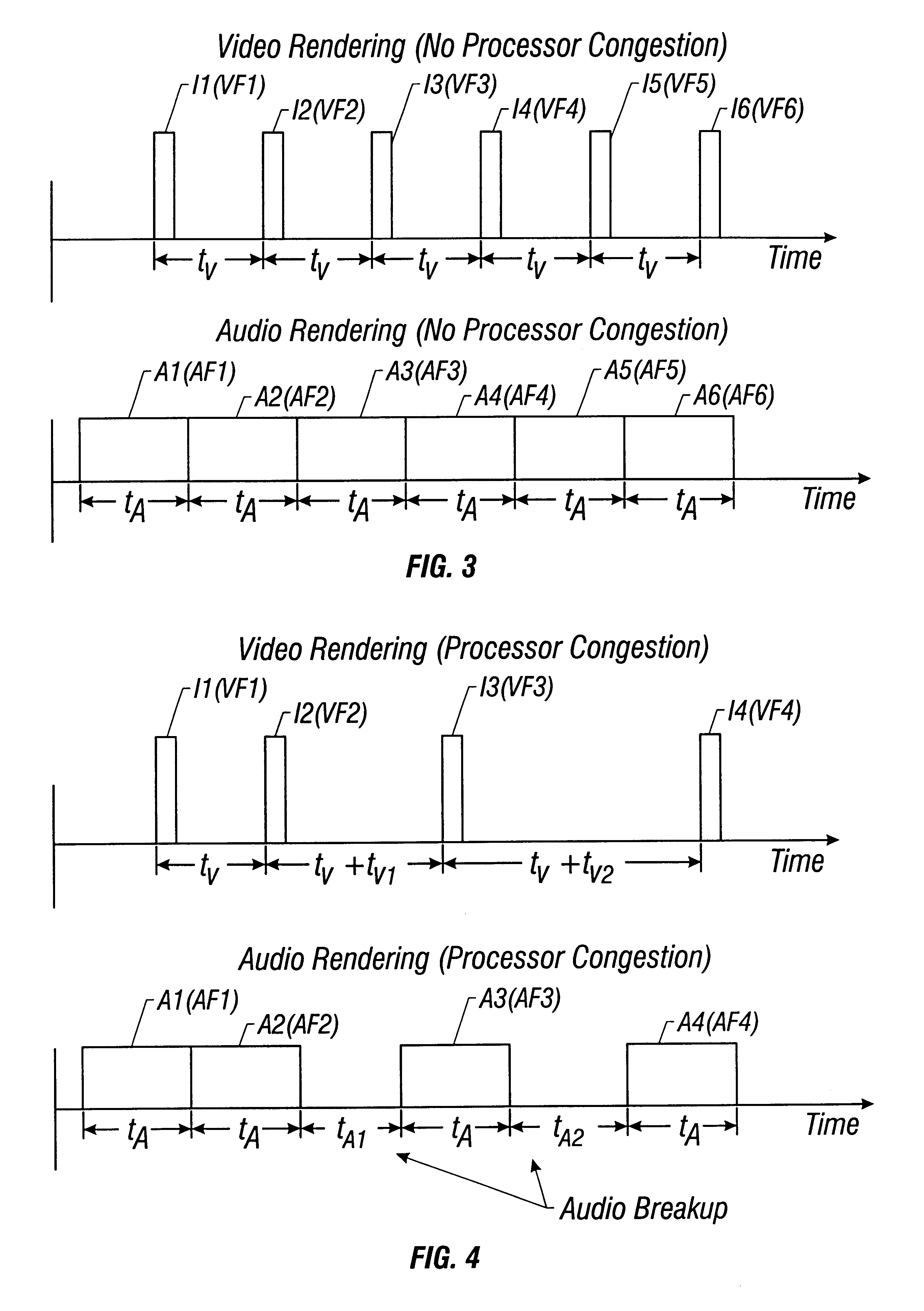Method and apparatus for detecting processor congestion during audio and video decode
a technology processing methods, applied in the field of audio and video decoding, can solve problems such as unnatural gaps, jerkiness or slowness, and inability to keep up with real time, and achieve the effects of chaotic video images, unnatural gaps, and unnatural gaps
- Summary
- Abstract
- Description
- Claims
- Application Information
AI Technical Summary
Problems solved by technology
Method used
Image
Examples
Embodiment Construction
The term system as used herein generally describes the hardware components that in combination allow the execution of software programs or algorithms. Hardware generally includes a processor, memory media, and input / output (I / O) devices. As used herein the term processor generally describes the logic circuitry that responds to and processes basic instructions. The term "memory medium" includes an installation medium, eg, a CD ROM, or floppy disks; a volatile computer system memory such as DRAM, SRAM, rambus RAM, etc.; or a non volatile memory such as optical storage or magnetic medium, eg, a hard drive. Rambus is a registered trademark of Rambus Inc. The term "memory" is used interchangeably with "memory medium" herein. The memory medium may comprise other types of memory or combinations thereof. In addition, the memory medium may be located in a system in which the programs are executed, or may be located in a second system that connects to the first system over a network. In this ...
PUM
 Login to View More
Login to View More Abstract
Description
Claims
Application Information
 Login to View More
Login to View More - R&D
- Intellectual Property
- Life Sciences
- Materials
- Tech Scout
- Unparalleled Data Quality
- Higher Quality Content
- 60% Fewer Hallucinations
Browse by: Latest US Patents, China's latest patents, Technical Efficacy Thesaurus, Application Domain, Technology Topic, Popular Technical Reports.
© 2025 PatSnap. All rights reserved.Legal|Privacy policy|Modern Slavery Act Transparency Statement|Sitemap|About US| Contact US: help@patsnap.com



